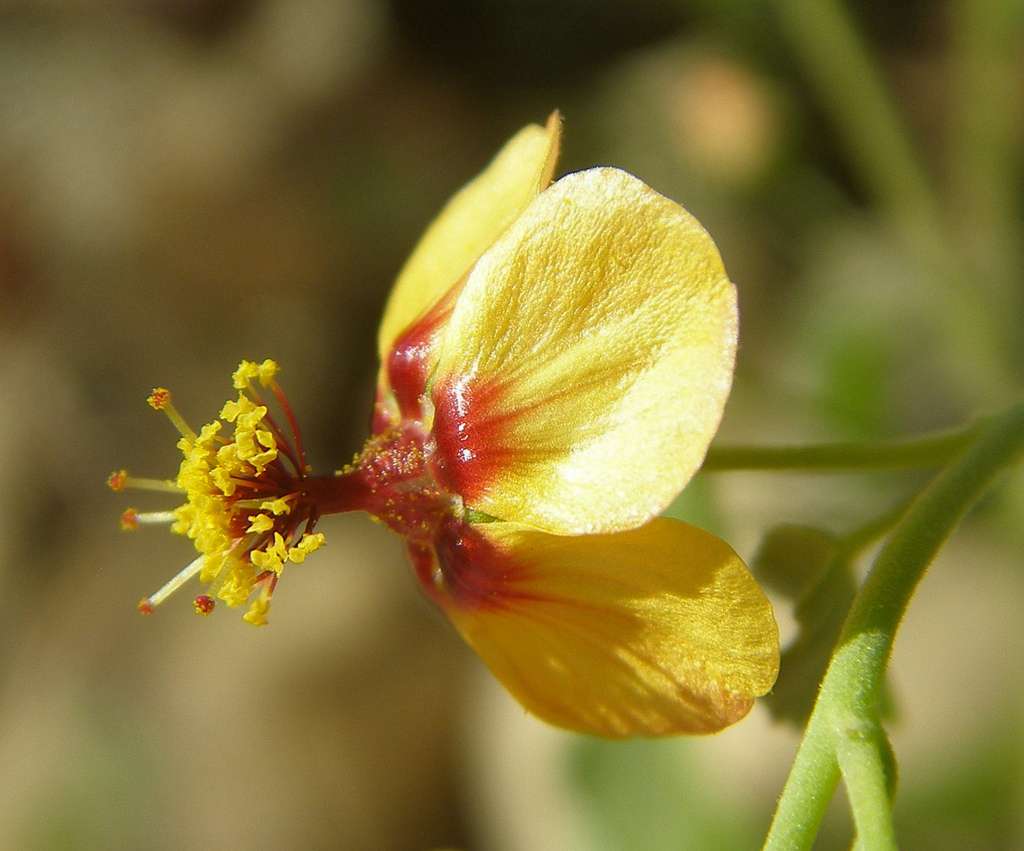|
Family: Malvaceae |
PLANT: Shrubs or subshrubs, usually stellate-pubescent. LEAVES: (in ours) more or less ovate and simple. FLOWERS: solitary in the leafaxils or in panicles or racemes; involucel absent; calyx 5-lobed; petals usually yellow or yellow-orange; stamens numerous; pistil 5-25-carpelled, with as many styles, the stigmas capitate. FRUIT: schizocarpic, of 5-25 mericarps, these sometimes cohering at maturity to form a pseudocapsular fruit. SEEDS: usually 3 per mericarp. NOTES: ca. 200 spp. from the warmer parts of the Americas, Africa, Asia and Australia. (Name of complex origin, probably from the Arabic abu, father of, and Persian tuZa or tuZha, mallow). Fryxell, P. A. 1988. Syst. Bot. Monogr. 25:24-68. REFERENCES: Fryxell, Paul A. 1994. Malvaceae. J. Ariz. - Nev. Acad. Sci. Volume 27(2), 222-236. Epicalyx wanting; stamen-column with anthers at the top; carpels 5- many; ovules 3-9 per carpel; styles 5-many, slender, stigmatic at the top; mature carpels dehiscent across the top, rounded or beaked at the summit, eventually falling from the axis; herbs or shrubs, usually pubescent, with broad, cordate, angular or lobed lvs and axillary, usually yellow fls. 100+, warm reg. Gleason, Henry A. & Cronquist, Arthur J. 1991. Manual of vascular plants of northeastern United States and adjacent Canada. lxxv + 910 pp. ©The New York Botanical Garden. All rights reserved. Used by permission. |


